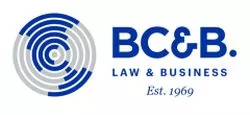A recurring thought in the minds of people is to think that patenting is an activity proper of large corporations, universities and inventors supported by large investors and that it is a time consuming process that implies high counseling and maintenance expenses.
With this in mind, the WIPO (World Intellectual Property Organization) being aware that the culture of protection on the intellectual material was not developed in emerging countries, organized a series of sessions that were given from September 6 to 14, 1999, where an analysis was given to the issue of how to generate an environment throughout the nations belonging to the WIPO where patent registration became available to any person or organization that possessed an invention worthy of being protected and economically exploitable, and where the protection of the inventive activity were more accessible to individuals, organizations, or universities without any sponsorship or that simply did not have sufficient funds to carry on with the process of registering their intellectual property.
From this need and from the necessity to generate a stronger intellectual property protection in the emerging nations, several member countries belonging to the WIPO put themselves into the task of developing and presenting ideas to the WIPO Standing Committee on the Law of Patents (SCP).
After assessing the different options and ideas presented, they reached to the conclusion that the most appropriate measure would be to generate a positive environment for intellectual protection, according to the economic and industrial development of each member state, where different entities could take advantage of the measure and at the same time could generate a competitive advantage at macro and microeconomic levels.
It was in the second session that the commission of Sudan presented a proposal that became the basis of the Small Entity procedure:
"The SCP recommends that each state member of the WIPO and, where the states members of the WIPO are members of intergovernmental organizations with competence in the field of patents, such organizations shall adopt a policy in the sense that all fees to be paid to the offices of the states and organizations will be reduced by a 50% for any patent applicant or patentee which is a physical persona, regardless of his nationality or residence".
From this proposal, the development of a mechanism of fee reduction in patent registration and maintenance began to take shape. Different conditions were also set up in order that the entities could maximize the advantage of this mechanism. These conditions comprised defining A) who would be the ones susceptible of the fee reduction, b) which type of fees would be reduced, and C) which would be the amount of the reduction. It was also established that these conditions would be adapted to each state's policy.
The persons subject to the fee reduction were classified as follows:
- An individual who is an inventor, i.e. a natural person having invention as productive activity.
- Certain types of legal entities, such as small and medium-sized companies. i.e. companies or organizations recognized in their own country as small or medium-sized.
- Non-profit organizations, referring to companies which primary purpose is not to generate profits.
- Research institutes. That is organizations and institutions engaged in scientific research and development.
The fee rates subject to reduction as the reduction itself would be determined considering issues such as the financial support an applicant could be granted to as well as the economic performance of each Patent and Trademark Office (PTO). However, it was stipulated that every PTO which considered providing fee rates reduction would at least reduce the application and annual maintenance rates. With that condition, from the thirty-one states attached to the WIPO, only 5 PTOs allowed a reduction to all the rates involved in the process. The other Offices provided the reduction to certain types of fees. 30 offices allowed reduction of the filing fee and 28 Offices reduced the fees for patent annuities. Just a few Offices allowed reducing the fees for filing an appeal or for an expedited examination. However, generally speaking, the 31 Offices allowed this new fee reduction measure.
The figure susceptible of fee reduction known as Small Entity has enabled PTOs as the ones of Germany, France, Brazil, China or Japan to reinforce their inventive activity leadership. At the same time, nations that were seeking to develop their industrial and productive potential, such as Finland, Ghana, Mexico, Panama or Portugal, have achieved to strengthen their intellectual property protection culture and have developed a competitive environment for inventors, research centers, and universities. In addition, the fee rates reduction has contributed to achieve a rebound in the efforts taken to eradicate unfair practice in the industry and informal trade.
The content of this article is intended to provide a general guide to the subject matter. Specialist advice should be sought about your specific circumstances.

